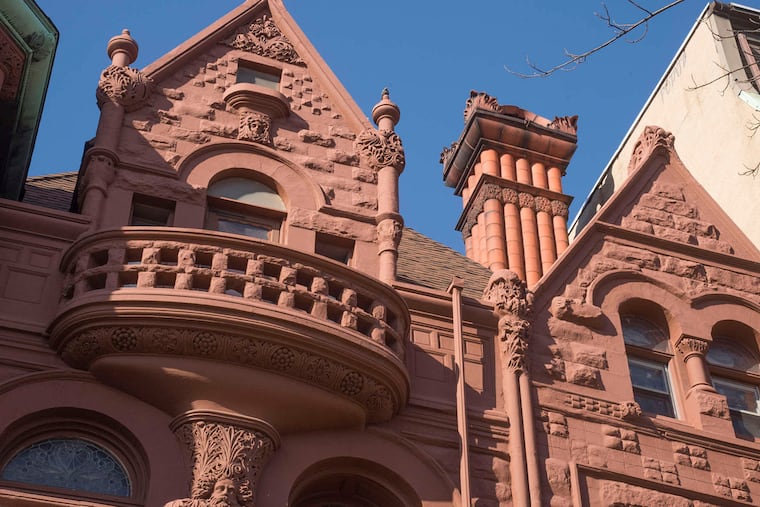Good Eye: Mansion District
Mention the "Mansion District" to many Philadelphians, and they will assume you're talking about Rittenhouse Square or Chestnut Hill. The city's official Mansion District can actually be found in North Philadelphia, just a block below Temple University.

Mention the "Mansion District" to many Philadelphians, and they will assume you're talking about Rittenhouse Square or Chestnut Hill. The city's official Mansion District can actually be found in North Philadelphia, just a block below Temple University.
The enclave, officially known as the North Broad Street Mansion District, stretches west to 16th Street, between Master and Oxford, and is packed with more than two dozen Victorian, Italianate, and Beaux-Arts urban estates. Because this column has been exploring the architecture of North Broad, my focus is on the striking chocolate-brown and limestone houses near Jefferson Street that serve as the district's gateway.
The Mansion District began taking shape around 1870, as the city was coming into its own as an industrial powerhouse and spawning a new wealthy elite. Rejected by Rittenhouse Square society, the manufacturing tycoons migrated to North Broad.
The earliest houses tended to be subdued brownstones with graceful arched windows and mansard roofs, like the nearly identical pair at 1432 and 1438 Broad, both built in 1868. But soon the Victorian fashion for ornamental frosting took hold, producing houses with exuberant skylines of turrets, gables, chimneys, and bay windows.
You can see a pristine example in the Ellis House at 1430, now owned by Father Divine's Peace Movement. Even as nearby houses were leveled for highway-style supermarkets and gas stations, the organization devoutly protected the house's eccentric features, including its triple-arched porch and pointed turrets.
The French-style Burk Mansion, at 1500 N. Broad, hasn't been so lucky. The limestone building, inspired by the Van Rensselaer Mansion at 18th and Walnut, was in perfect condition in 1984, when all the houses in the Mansion District were listed on the National Register. But after Temple acquired the house in 1993, it sat empty and untended, and even suffered a minor fire.
It wasn't until Margaret Carney was hired as university architect in 2011 that Temple began to stabilize the building. The school has invested several million dollars on a new roof and protective windows, but Carney says Temple still isn't sure what to do with the mansion.
Hard as it to believe, Burk is the only one of the great mansions in the National Register district that is also listed on the city's Historic Register. That means it is the only one that cannot be demolished. It wouldn't take much to extend the same protection to all the houses by creating a city version of the Mansion District, ensuring the legacy of the industrial tycoons survives for another century.
Take the Broad Street subway to the Cecil B. Moore stop and walk south to admire the surviving mansions.
ingasaffron@gmail.com
215-854-2213
@ingasaffron
www.philly.com/saffron